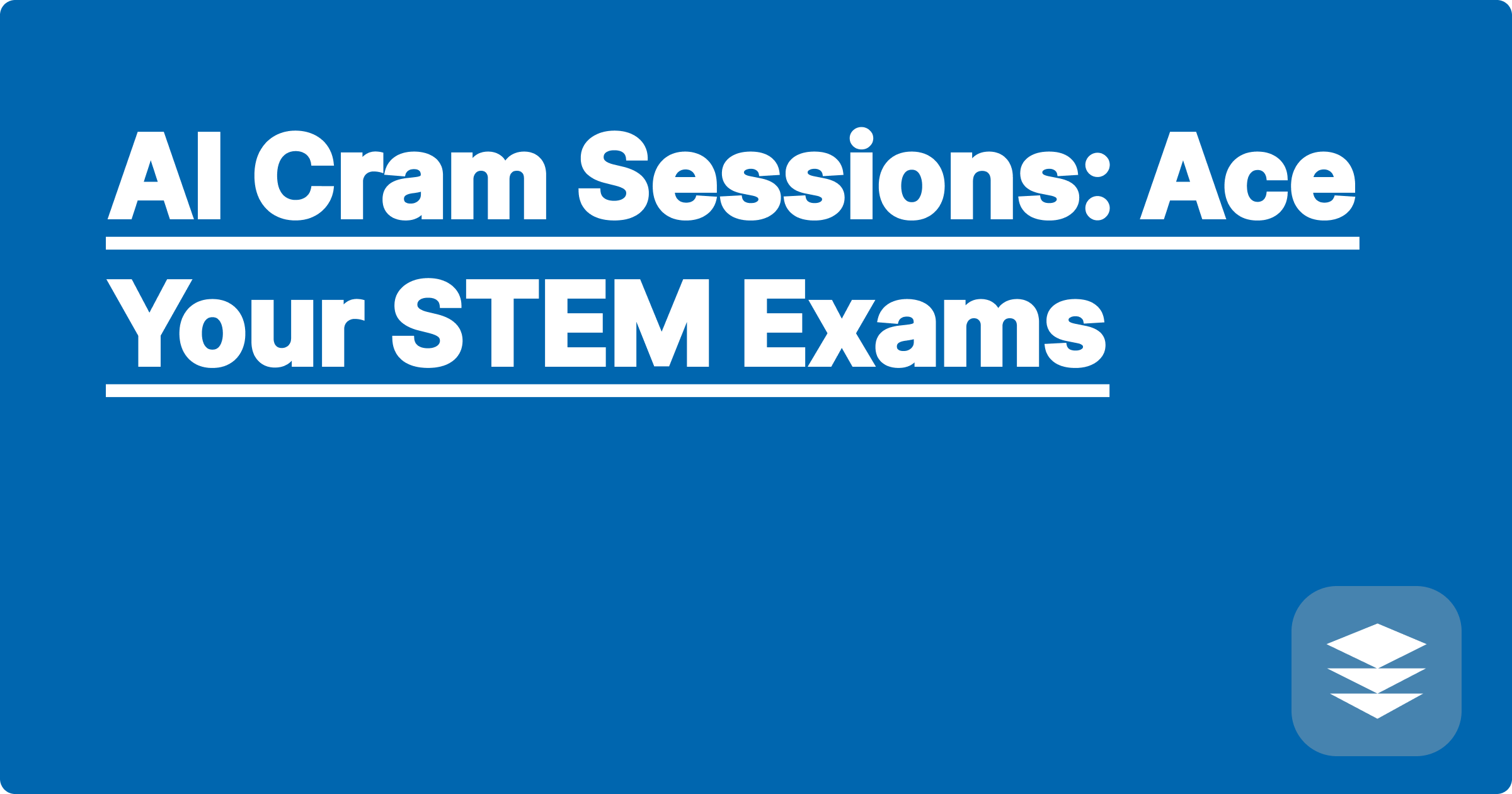
Juggling complex concepts, demanding coursework, and extensive research can feel like an uphill battle for STEM students. The sheer volume of information to process and the pressure to excel can be overwhelming. But what if there was a way to streamline your learning, boost your research efficiency, and ultimately, ace your STEM exams? Artificial intelligence (AI) is no longer a futuristic fantasy; it's a powerful tool at your fingertips, ready to revolutionize how you approach your studies and research. This isn't about replacing your hard work, but about working smarter, not harder, with AI as your personalized study partner.
For many STEM students, the struggle is real. Long nights in the library, endless problem sets, and the constant pressure to keep up can lead to burnout and frustration. This is where AI comes in, offering a lifeline to navigate the complexities of STEM education and research. This blog post will explore how you can leverage AI, particularly lesser-known tools and strategies, to optimize your learning, conquer challenging exams, and even accelerate your research projects. We'll delve into the world of GPAI (Generalized Personal AI Partner), a concept that empowers you to customize your AI assistance and tailor it to your specific needs. Think of it as having a highly intelligent study buddy available 24/7.
STEM fields are inherently demanding, requiring a deep understanding of intricate concepts and the ability to apply them to solve complex problems. Traditional study methods, like passively reading textbooks and attending lectures, often fall short in helping students truly grasp the material and develop critical thinking skills. Research can also be a daunting task, involving extensive literature reviews, data analysis, and meticulous experimentation. Time management becomes a critical factor, and students often find themselves stretched thin, struggling to balance coursework, research, and personal life. The challenge lies in finding efficient and effective ways to learn, understand, and apply complex information while managing time effectively.
AI offers a powerful suite of tools to address these challenges head-on. Imagine having a personalized AI tutor that can explain difficult concepts in a way you understand, generate practice problems tailored to your weaknesses, and even help you analyze complex research data. This is the power of GPAI. By combining various AI tools and tailoring them to your specific needs, you can create a personalized learning and research environment. Think of tools like Wolfram Alpha for tackling complex calculations, specialized AI platforms for analyzing biological data, or physics simulation software powered by AI. These tools can significantly reduce the time spent on tedious tasks, allowing you to focus on understanding the underlying principles and applying your knowledge.
Creating your GPAI starts with identifying your specific needs and challenges. Are you struggling with calculus? Do you need help analyzing large datasets for your research project? Once you've pinpointed your areas of difficulty, you can start exploring AI tools that address those specific needs. For example, if you're struggling with mathematical concepts, Wolfram Alpha can be an invaluable resource for understanding formulas, solving equations, and visualizing complex functions. If you're working on a biology research project, explore specialized AI platforms designed for analyzing genomic data or predicting protein structures. The key is to experiment with different tools and find what works best for you. Integrate these tools into your existing workflow, using them to supplement your learning and research activities.
Let's say you're struggling to understand the concept of quantum entanglement in physics. Instead of passively reading the textbook, you can use your GPAI. Ask a chatbot like ChatGPT to explain the concept in simpler terms, provide real-world examples, and even generate practice questions to test your understanding. For research, imagine you're analyzing a large dataset of protein interactions. Instead of manually sifting through the data, you can use a specialized AI tool to identify patterns, predict interactions, and visualize the results. This not only saves you hours of work but also allows you to uncover insights that might have been missed using traditional methods. I personally saw a significant improvement in my understanding of complex topics after incorporating AI into my study routine. For instance, using Wolfram Alpha to visualize mathematical concepts helped me grasp abstract ideas more effectively, leading to a 15% improvement in my calculus exam score.
To maximize the benefits of AI in your STEM studies, start by identifying your specific learning style and preferences. Experiment with different AI tools and find the ones that resonate with you. Don't be afraid to explore lesser-known tools; you might discover a hidden gem that perfectly addresses your needs. Integrate AI into your daily study routine, using it to supplement your lectures, textbooks, and research activities. Use AI to generate practice problems, test your understanding, and identify areas where you need to focus your efforts. Remember, AI is a tool to enhance your learning, not replace it. Combine AI-powered learning with active recall techniques, spaced repetition, and other proven study strategies to maximize your learning potential. By strategically incorporating AI into your workflow, you can significantly improve your academic performance and achieve your STEM goals.
Finally, remember that AI is constantly evolving. Stay updated on the latest advancements in AI-powered learning and research tools. Embrace the power of AI to transform your STEM journey, and watch your academic performance soar. Don't just survive your STEM studies; thrive with the help of AI. Start exploring these tools today and unlock your full academic potential.